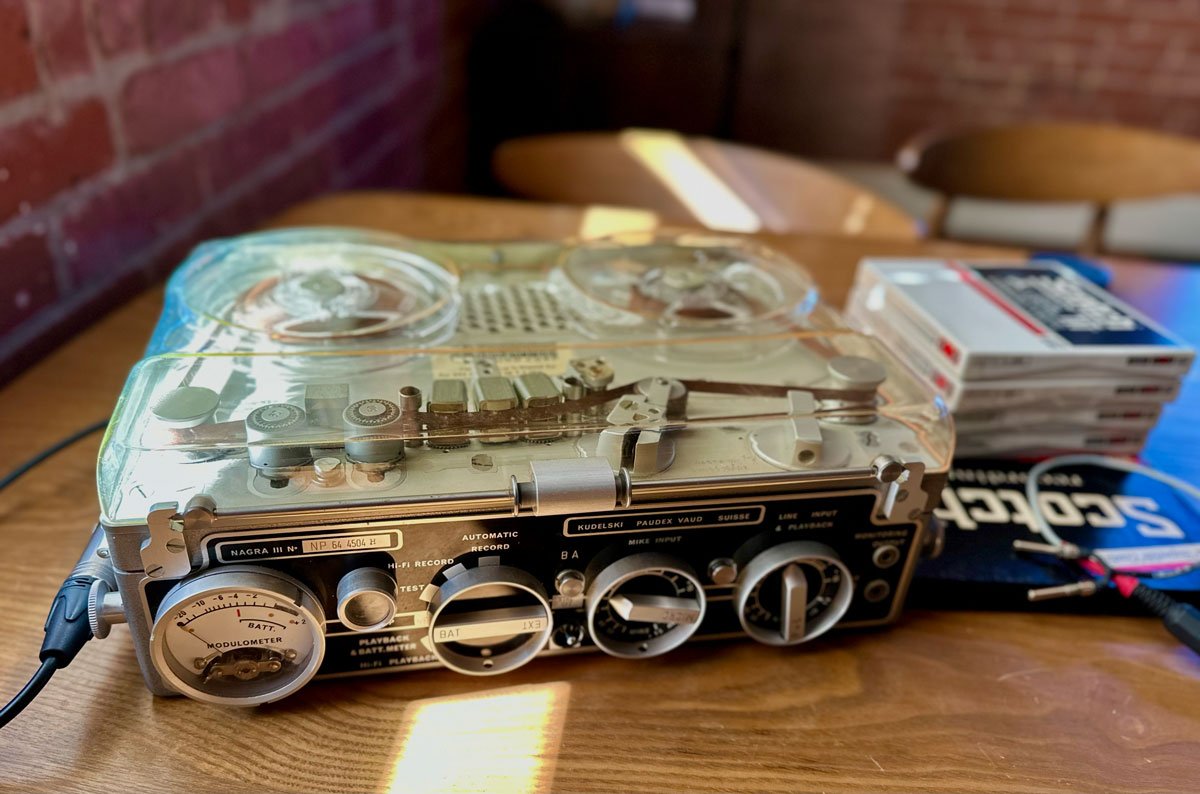the analog heritage of sound recording
In a world of digital audio recordings, it is easy to forget the analog heritage of sound recording. Reel-to-reel audio recorders, also known as tape recorders, were once the standard for capturing and preserving sound. One of the most iconic and highly regarded models of reel-to-reel recorders was the Nagra III.
The Nagra III was produced by the Swiss company Kudelski SA and was introduced in the late 1950s. It was known for its compact size, durability, and high-quality sound recordings. The Nagra III was used by professionals in various fields, including film, television, and music production. Journalists who used the recorder appreciated its portability and dependability in the field.
The Nagra III was designed with simplicity in mind, and it was easy to operate. It featured a basic control panel with knobs for adjusting levels, speeds, and playback direction. The recorder was powered by a battery and could run on a single charge for several hours, making it ideal for field recordings. The Nagra III was also designed to be rugged and encased in a metal housing that protected it from damage.
The sound quality of the Nagra III was its defining characteristic, and it remains one of the most sought-after reel-to-reel recorders to this day. The recorder's circuitry was designed to provide a low-noise, high-fidelity signal. It produced a warm, natural sound free from the harshness and distortion often found in other reel-to-reel recorders. The Nagra III was also known for its low wow and flutter, which helped preserve the recordings' accuracy.
Despite the advent of digital recording technology, the Nagra III remains a popular choice for audio enthusiasts and professionals. It is a testament to the quality of the design and construction of the Nagra III that so many of these recorders are still in use today, more than 60 years after they were first introduced.
a place in popular culture
The Nagra III also has a place in popular culture. It was prominently featured in the 1981 Brian De Palma movie "Blow Out." In the film, John Travolta plays a sound technician who uses a Nagra III to record audio that provides crucial evidence in a political conspiracy. The film highlights the versatility and reliability of the Nagra III, which has helped increase the recorder's cultural visibility.
The use of Nagra III in "Blow Out" also speaks to the enduring appeal of analog recording technology. Despite the convenience and affordability of digital recording equipment, there is still a demand for the warm, natural sound that analog equipment provides. The Nagra III is a reminder of this. It continues to be a popular choice for recording enthusiasts and professionals who appreciate the sound quality and tactile experience of analog recording.
Nagra Audio
Movie: Blow Out 1981 R 1h 48min

